
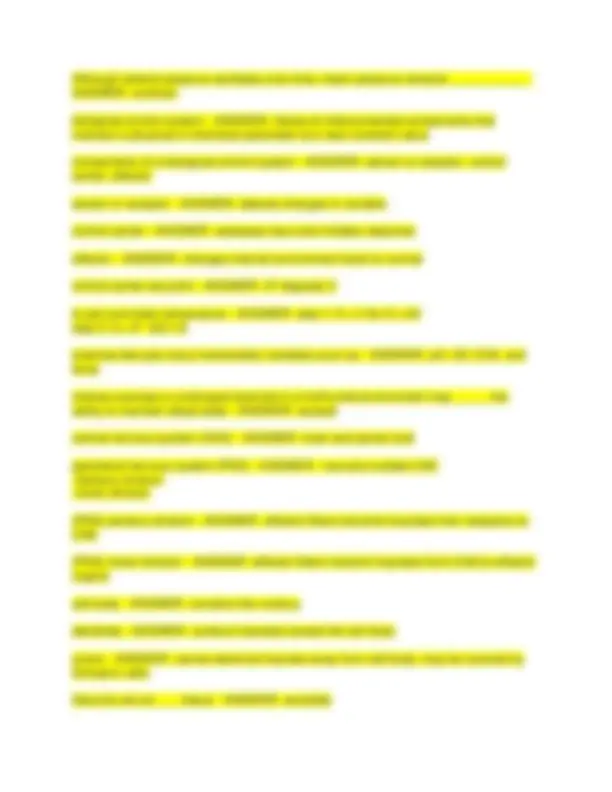
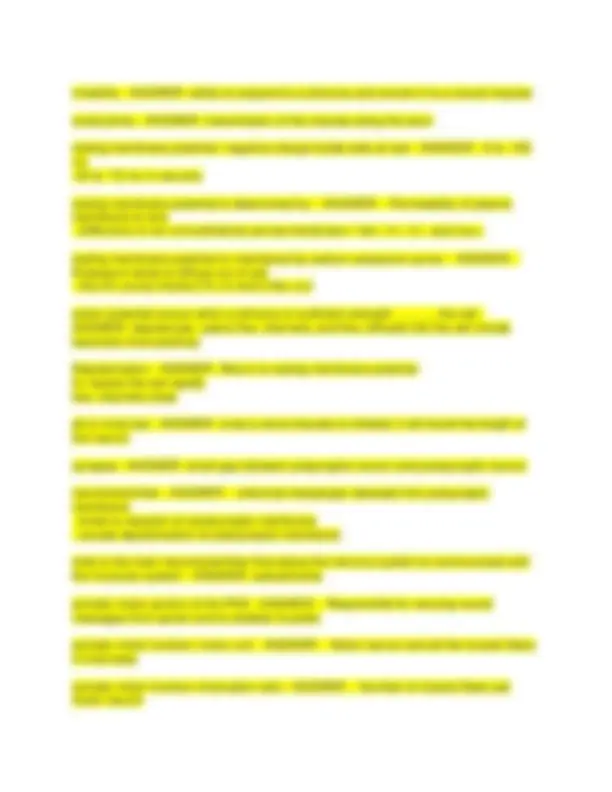
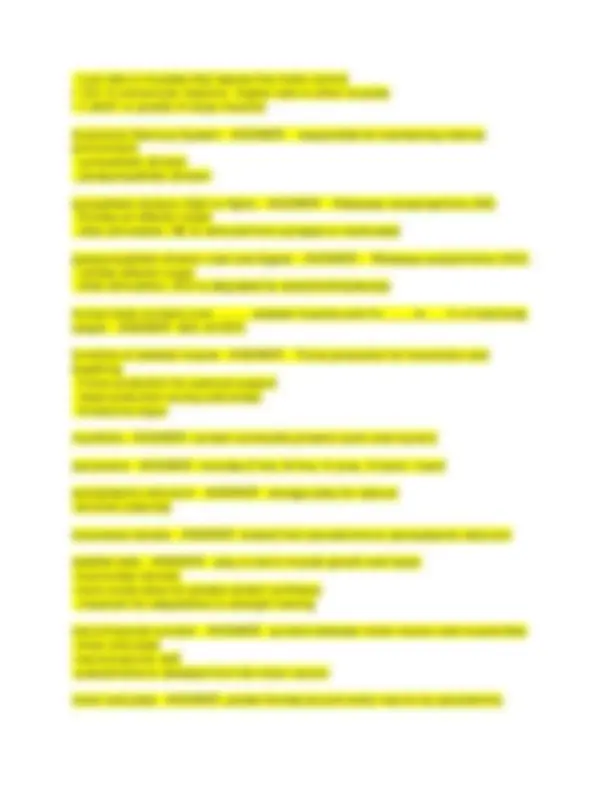
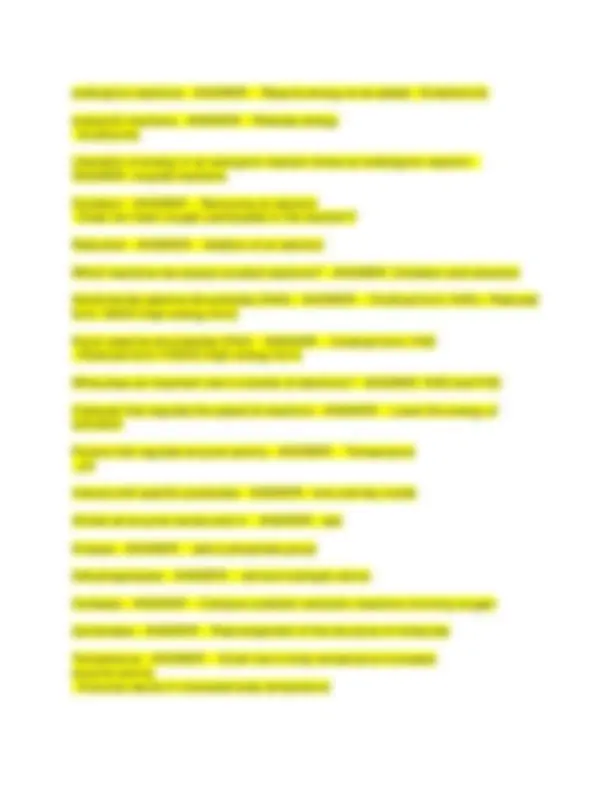
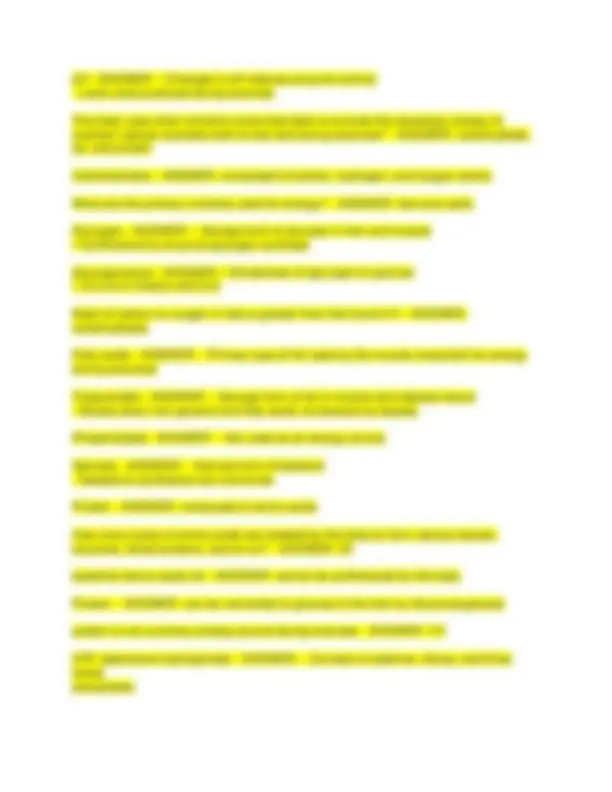
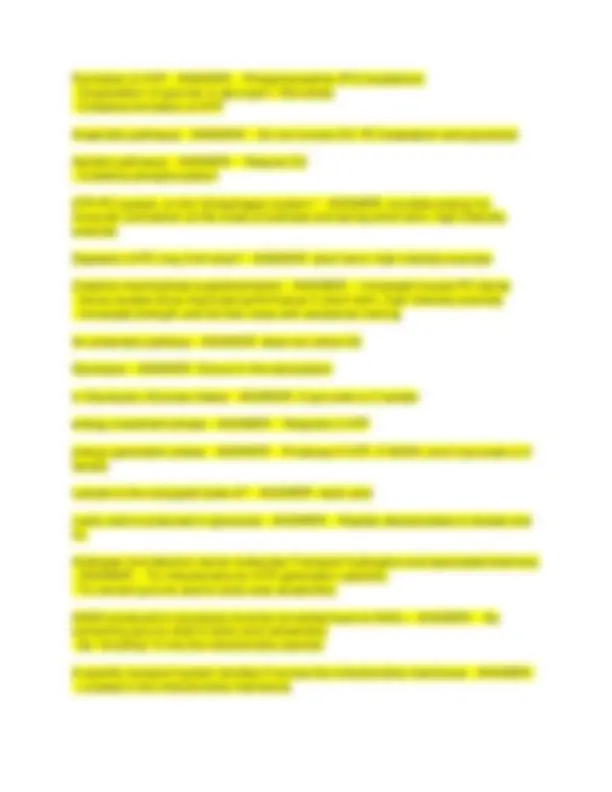
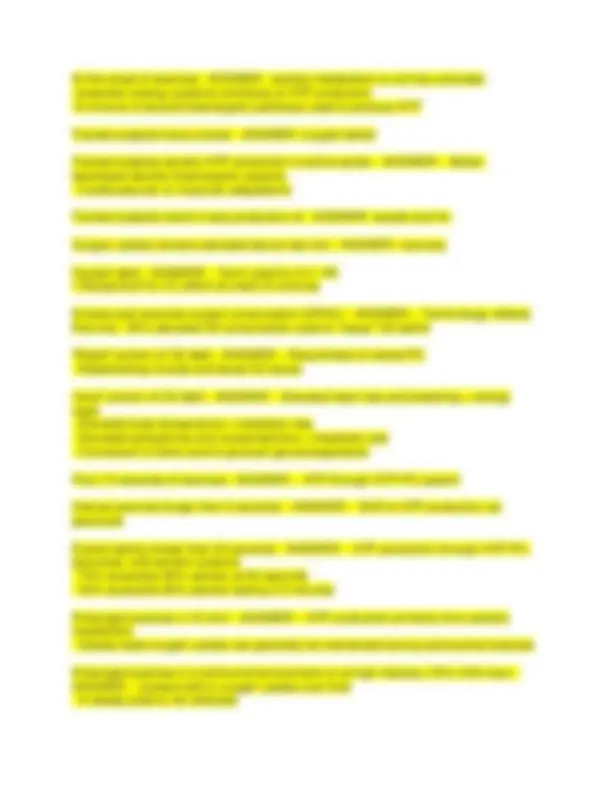
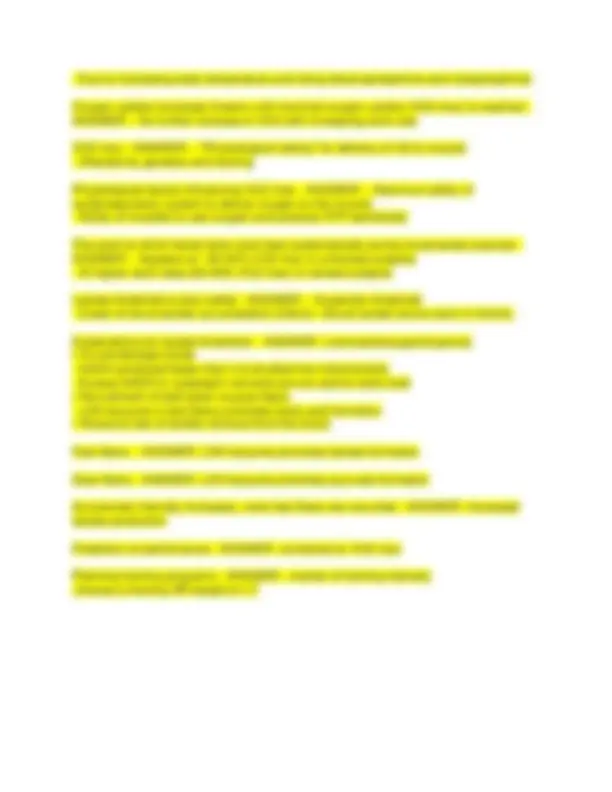



Study with the several resources on Docsity

Earn points by helping other students or get them with a premium plan


Prepare for your exams
Study with the several resources on Docsity

Earn points to download
Earn points by helping other students or get them with a premium plan
Community
Ask the community for help and clear up your study doubts
Discover the best universities in your country according to Docsity users
Free resources
Download our free guides on studying techniques, anxiety management strategies, and thesis advice from Docsity tutors
348 Exam #1 Questions With Correct Detailed Answers..
Typology: Exams
1 / 15

This page cannot be seen from the preview
Don't miss anything!










Marathon runners primarily rely on anaerobic pathways for the needed energy. A. True B. False - ANSWER- False Overall efficiency of aerobic respiration is 34%. A. True B. False - ANSWER- True During a single krebs cycle, ____ molecule(s) of NADH and ___ molecule(s) of FADH are produced. A. 2.5, 1. B. 1.5, 2. C.3, D.1,3 - ANSWER- C. 3, When oxygen is sufficient, NADH produced in glycolysis is converted back to NAD+ by __________. A. converting pyruvic acid to lactic acid B. "shuttling" H into the mitochondria - ANSWER- B. "shuttling" H into the mitochondria Breakdown of ATP is an exergonic reaction. A. True B. False - ANSWER- True Enzymes are catalysts that increase the rate of reactions by ______ the energy of activation A. lowering B. increasing - ANSWER- A. lowering Muscular contractions that occur during normal body movements are tetanic contractions. A. True B. False - ANSWER- True ________ skeletal muscle fibers have the lowest ATPase activity. A.Type IIx B.Type I C.Type IIa D.Type IIb - ANSWER- B. Type 1 Sarcolemma is the _________ of a skeletal muscle fiber .A. cytoplasm B. cell membrane C. nucleus - ANSWER- B. cell membrane
Which list is in correct order? A. Wholemuscle Fascicles Musclefibers Myofibrils Sarcomeres Actin&myosin proteins B. Wholemuscle Fascicles Myofibrils Musclefibers Sarcomeres Actin&myosin proteins - ANSWER- A. Which list on the next slide has the structure of skeletal muscles in the correct order from largest to smallest structures? - ANSWER- Sarcolemma, Myofibril, Sarcomere, Myofilament Not all neurotransmitters are excitatory. A. True B. False - ANSWER- True At rest, a neuron is polarized because the inside of a neuron is ______ charged relative to the outside. A. negatively B. positively - ANSWER- negatively Quizzes can be made up as long as they are excused ones. A. True B. False - ANSWER- False The term homeostasis is defined as ____. A. a change within the internal environment B. the maintenance of a constant internal environment C. a low metabolic rate - ANSWER- B. the maintenance of a constant internal environment homeostasis - ANSWER- normal resting conditions= relatively constant and "normal" internal environment steady state - ANSWER- physiological variable is unchanging, but not necessarily "normal"; balance between demands placed on body and the body's response to those demands. Ex: body temp, arterial blood pressure Body temperature reaches a _______ when at a steady state - ANSWER- plateau
irritability - ANSWER- ability to respond to a stimulus and convert it to a neural impulse conductivity - ANSWER- transmission of the impulse along the axon resting membrane potential- negative charge inside cells at rest - ANSWER- - 5 to - 100 mv
oxidative capacity - ANSWER- number of capillaries, mitochondria, and amount of myoglobin contractile properties of muscle - ANSWER- • Maximal force production- Force per unit of cross-sectional area
endergonic reactions - ANSWER- - Require energy to be added - Endothermic exergonic reactions - ANSWER- - Release energy
Formation of ATP - ANSWER- - Phosphocreatine (PC) breakdown
Aerobic ATP production - ANSWER- Occurs inside the mitochondria Aerobic ATP production Involves the interaction of two cooperating metabolic pathways
At the onset of exercise - ANSWER- - aerobic metabolism is not fully activated